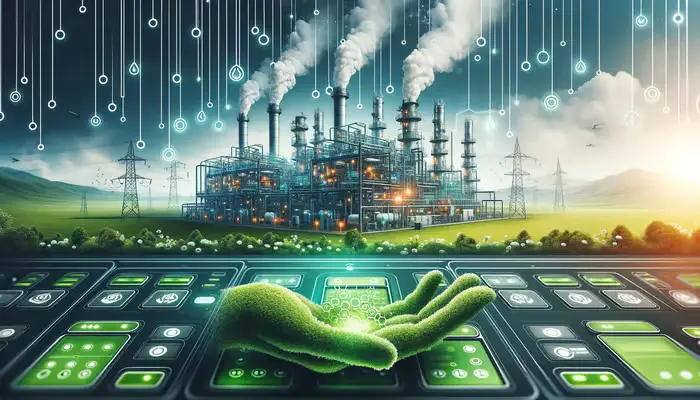Oil and Gas Industry Accelerates Sustainability with Innovative Solutions

Dubai, UAE
The global oil and gas industry is doubling down on sustainability in 2025, driven by intensifying global pressure to meet net-zero emissions targets by 2050, stricter environmental regulations, and rising stakeholder expectations. Companies are investing in cutting-edge technologies like carbon capture, methane monitoring, and renewable energy integration to reduce their environmental footprint while maintaining operational viability. Against a backdrop of market volatility and geopolitical challenges, these sustainability initiatives are reshaping the industry’s future.
Scaling Up Carbon Capture Technologies
Carbon capture, utilization, and storage (CCUS) is a linchpin of the industry’s sustainability strategy, with global investments projected to hit $30 billion in 2025. ExxonMobil’s LaBarge facility in Wyoming is capturing 8 million metric tons of CO2 annually, with plans to expand to 12 million by 2029, leveraging AI-driven optimization to cut capture costs by 12%. Chevron’s Gorgon project in Australia, one of the largest CCUS facilities, sequesters 4.5 million metric tons yearly, supporting LNG production with reduced emissions. Despite progress, a 2025 PwC survey indicates only 45% of oil and gas executives are prioritizing CCUS due to high capital costs and uncertain regulatory frameworks, highlighting the need for greater policy support.
Methane Emissions Reduction Gains Traction
Reducing methane emissions, a greenhouse gas 25 times more potent than CO2, is a top priority. Advanced AI and satellite-based monitoring systems are enabling companies like BP to detect and mitigate leaks, achieving an 8% reduction at its Permian Basin operations in 2024. The Oil and Gas Climate Initiative (OGCI), including members like TotalEnergies and Shell, aims to cut methane intensity to near-zero by 2030, with 2025 investments of $3 billion in leak detection technologies. These efforts are critical as methane regulations tighten globally, though smaller producers face challenges adopting costly monitoring systems, with only 30% implementing them in 2025.
Renewable Energy Integration Expands
The integration of renewable energy into oil and gas operations is accelerating to lower emissions. Cheniere Energy’s Corpus Christi LNG facility now uses 60 MW of solar power, reducing operational emissions by 6% in 2024. Saudi Aramco is investing $7 billion in 2025 to power its offshore platforms with wind and solar, targeting a 10% emissions reduction by 2027. Globally, renewable energy adoption in the sector is expected to grow by 22% in 2025, driven by government incentives and corporate net-zero commitments. However, infrastructure limitations and high upfront costs remain barriers, with only 40% of executives surveyed by Deloitte prioritizing renewable integration.
Circular Economy and Resource Efficiency
The industry is embracing circular economy principles to minimize waste and enhance sustainability. Companies like Eni are recycling 20% of drilling fluids and repurposing waste hydrocarbons for petrochemical production, cutting waste by 12% in 2024. The petrochemical sector, projected to drive 18–20% of global oil demand by 2040, is adopting recycled feedstocks, with BASF targeting 600,000 metric tons of recycled plastics annually by 2028. Digital tools, including AI-driven waste management systems, are reducing disposal costs by 9%, supporting a shift toward sustainable resource use across the value chain.
Navigating Market and Geopolitical Pressures
Sustainability efforts are unfolding amid a projected 1.7 million barrels per day (b/d) oil surplus by early 2026, which could push Brent crude prices from $68 per barrel in August 2025 to $50 per barrel in Q1 2026. Geopolitical risks, such as tensions in the Strait of Hormuz, handling 21% of global LNG, threaten supply chains, prompting $4 billion in investments for low-carbon, diversified routes. The EU’s March 2025 ban on Russian LNG re-exports is driving demand for sustainable U.S. and Qatari LNG, with Europe’s LNG imports surging 23.6% in H1 2025, creating opportunities for green-focused producers.
Community Engagement and Social Sustainability
Sustainability extends beyond environmental efforts to include social responsibility. Companies are investing in community development to maintain social licenses to operate, with TotalEnergies allocating $20 million in 2025 to education and healthcare near its African LNG projects. Workforce transitions are also critical, with 10,000 jobs cut globally in 2024–2025 due to automation. Industry-led retraining programs, backed by $350 million, are transitioning 6,000 workers to roles in CCUS, renewables, and digital operations by 2027, fostering social sustainability and addressing labor market shifts.
Technology as a Sustainability Enabler
Advanced technologies are powering sustainability initiatives. AI and Industrial Internet of Things (IIoT) systems are optimizing CCUS and methane detection, with Shell reporting a 10% efficiency gain in emissions monitoring at its Prelude FLNG platform in 2024. Blockchain is enhancing transparency in carbon credit trading, reducing transaction costs by 8% for QatarEnergy. Digital twins are minimizing energy use in refining, with Sinopec cutting consumption by 7% at its petrochemical plants. In 2025, $12 billion in technology investments are expected to drive sustainability, enabling the industry to meet stricter environmental standards.
Outlook for 2025
The oil and gas industry’s sustainability push in 2025 is transforming its operations through CCUS, methane reduction, renewable integration, and circular economy practices. Despite challenges from market oversupply, geopolitical risks, and cost barriers, companies are leveraging technology and community engagement to align with global net-zero goals. These innovations will be crucial for ensuring the industry’s resilience and relevance in the evolving energy landscape through 2030.







